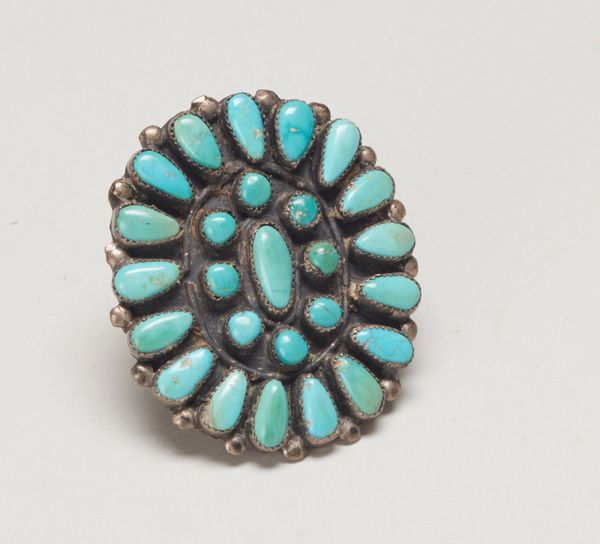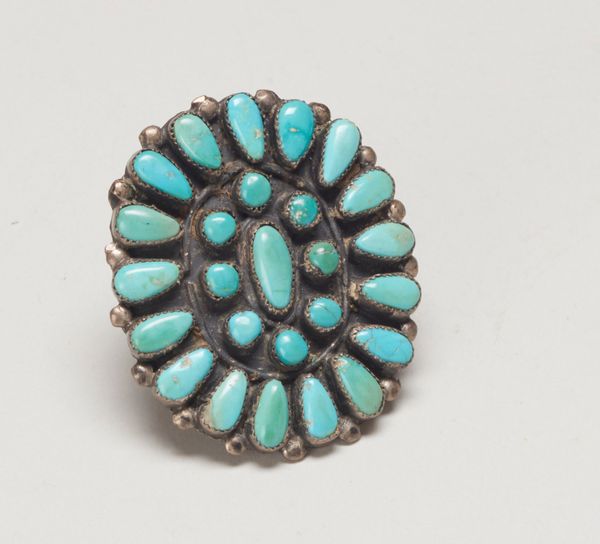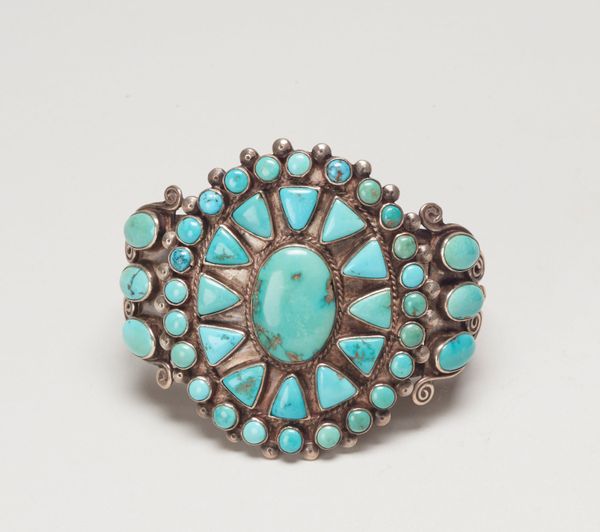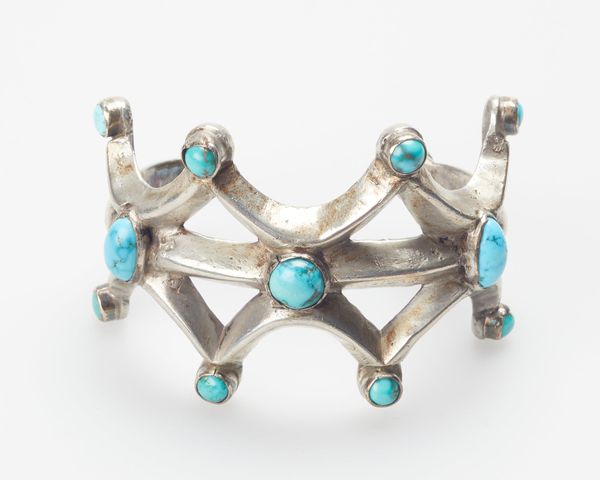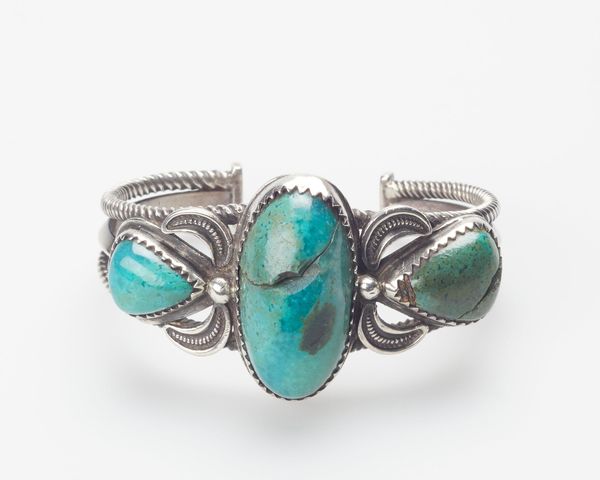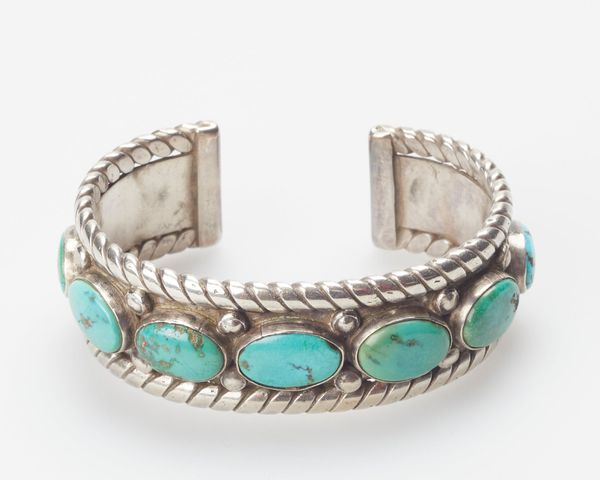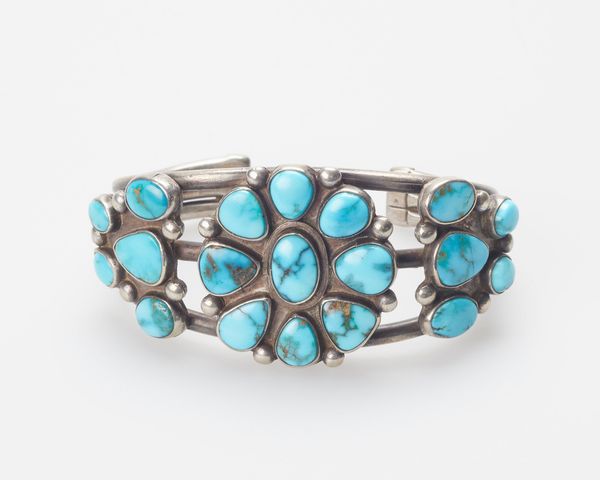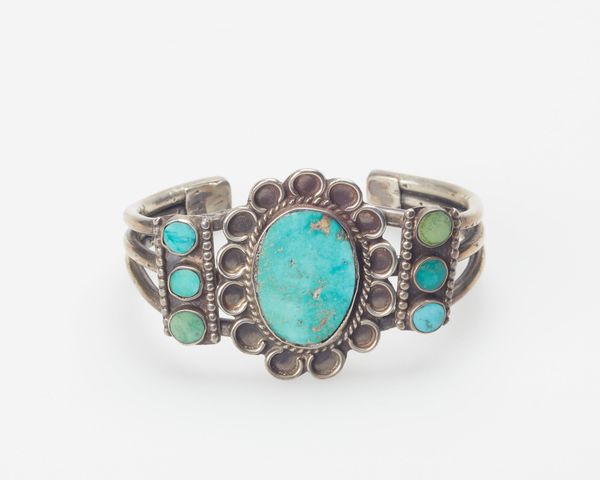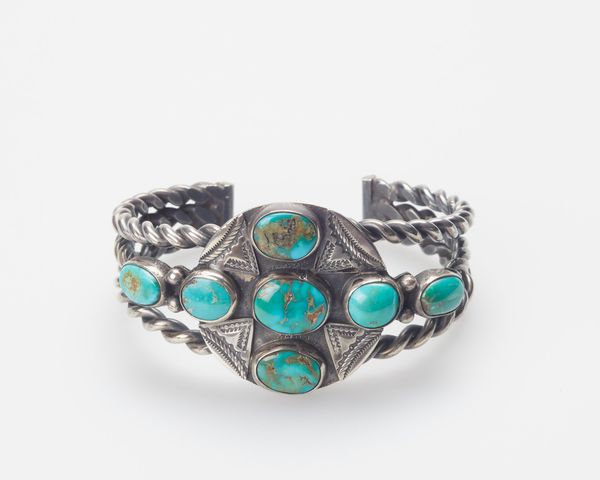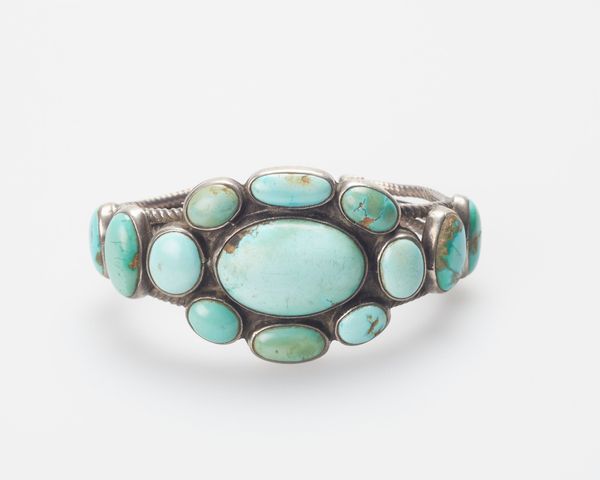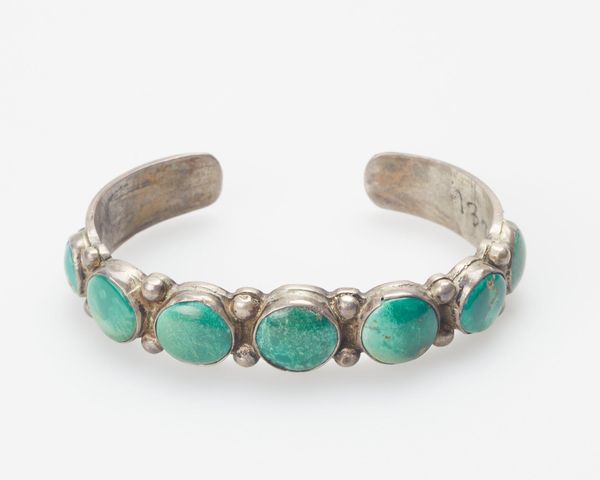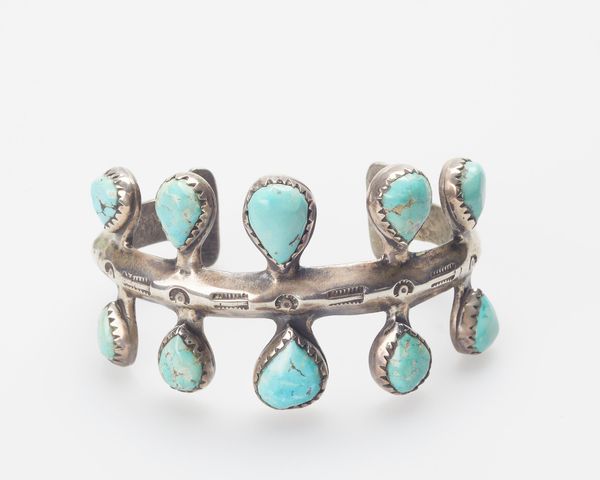
silver, metal
#
silver
#
metal
#
indigenous-americas
Copyright: Public Domain
Curator: This is a pair of Navajo collar points dating from approximately the 1930s to 1940s. They’re made of silver and currently reside here at the Minneapolis Institute of Art. Editor: Immediately, I'm drawn to the contrast between the cool silver and the range of turquoise colors, some bluer, others greener. It gives off a vintage feel. Almost like stepping back in time. Curator: Exactly. Pieces like these collar points played a significant role in Navajo economics and artistry, particularly with increased interactions with settlers. Silverwork, especially utilizing turquoise, became a staple. Editor: So more than decoration, it also spoke to intercultural exchange and, perhaps, Navajo strategies for survival and visibility within a changing economic landscape? How were they circulated or viewed? Curator: That's a keen observation. They were sold as souvenirs but they simultaneously showcased indigenous artistry. Tourists and collectors played a big part. Consider, also, the rise of trading posts like the Hubbell Trading Post in Arizona. These outposts helped popularize Native American art but also introduced commercial demands. Editor: Right, a complex dynamic. On one hand, this object preserves the traditions of Navajo silversmithing, showcasing detailed work and an eye for stone selection, but on the other, this aesthetic is caught in a web of socioeconomic relations. How might this connect to broader questions about cultural appropriation or representation of Indigenous artistry? Curator: Those are pertinent questions, absolutely. The history surrounding these collar points compels us to unpack the power dynamics and market forces. We can contemplate these designs in conversation with questions of commodification and authenticity. Editor: Ultimately, analyzing the history, market, and labor can empower contemporary viewers to challenge, reinterpret, and actively advocate for accurate representation and the sovereignty of Indigenous art forms today. Curator: It is really remarkable how one adornment can prompt such a complex story, isn’t it? It forces us to think about trade, tradition, and cultural identity. Editor: It truly does. These points really do connect the personal to larger political narratives.
Comments
No comments
Be the first to comment and join the conversation on the ultimate creative platform.
